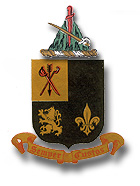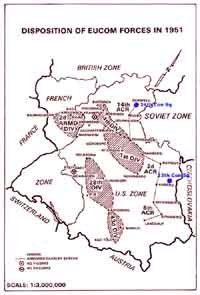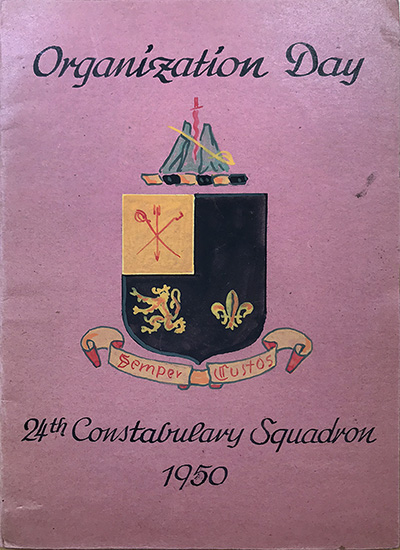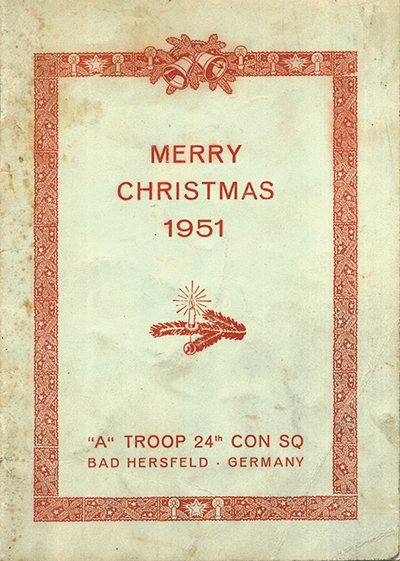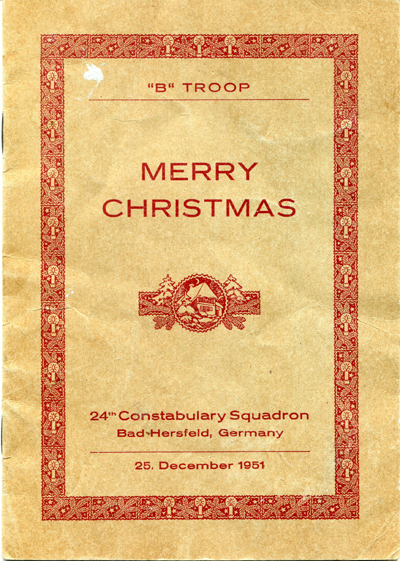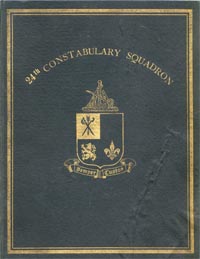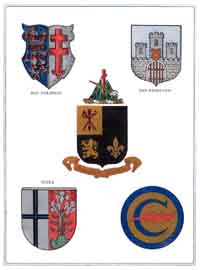| If you do
NOT see the Table of Contents frame to the left of this page, then
Click here to open 'USArmyGermany' frameset |
|||||||||||||||||||||
24th Constabulary Squadron |
|||||||||||||||||||||
|
|||||||||||||||||||||
|
|
|||||||||||||||||||||
| Squadron History | |||||||||||||||||||||
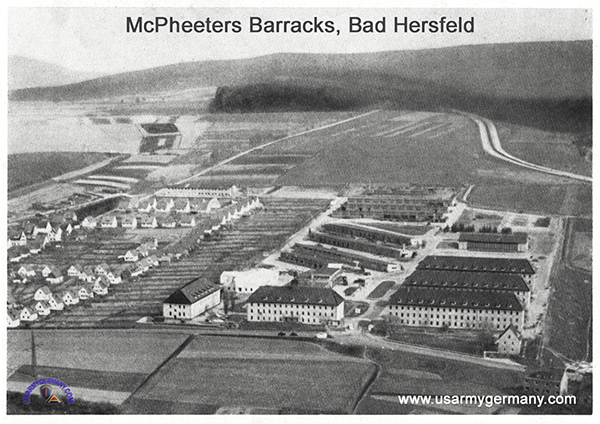 Home of the 24th Constabulary Squadron |
|||||||||||||||||||||
| 1949 - 1952 | |||||||||||||||||||||
| (Source: 24th Constabulary Squadron Yearbook 1952.) | |||||||||||||||||||||
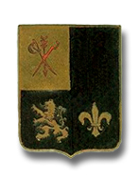 24th Constabulary Sqdn DUI
24th Constabulary Sqdn DUIOn May 1, 1946, the 24th Reconnaissance Squadron was redesignated as the 24th Constabulary Squadron, 4th Constabulary Regiment, and was assigned occupation duty with the United States Forces in Austria. The 24th Squadron was relieved from assignment to 4th Constabulary Regiment and assigned to the United States Constabulary in February 1949. The 22nd Constabulary Squadron who was then performing border patrol duties along the US-USSR Zonal Border from Coburg in the south to Hebemshausen in the north, a distance of 225 miles, was ordered deactivated by the Department of the Army and redesignated as the 24th Constabulary Squadron. In this redesignateion all personnel and equipment from the 22nd Squadron was absorbed by the 24th Squadron with its headquarters at (Bad) Hersfeld, Germany. |
|||||||||||||||||||||
|
|
|||||||||||||||||||||
| (Source: US ARMY BORDER OPERATIONS IN GERMANY, 1945-1983, by William E. Stacy, Headquarters US Army, Europe and 7th Army, 1984.) | |||||||||||||||||||||
|
|||||||||||||||||||||
|
The 22d Constabulary
Squadron's parent unit was the 14th Constabulary Regiment, which
was assigned to the 1st Constabulary Brigade, while the 53d Constabulary
Squadron's parent unit, the 6th Constabulary Regiment, was assigned
to the 2d Constabulary Brigade. The 22d Constabulary Squadron was
responsible for the northern portion of the eastern border and the
53d patrolled the southern part. |
|||||||||||||||||||||
| The
Emerging Tactical Force In the fall of 1950, President Harry S. Truman announced a build-up of American forces in Europe to meet American commitments in the new NATO alliance. This decision was to have a major impact on the border security mission as a more mature theater army grew in place of the US Constabulary. The US Constabulary headquarters was inactivated on 24 November 1950 and its personnel absorbed into the newly activated Seventh Army, with the 1st Infantry Division and the Constabulary units being assigned to Seventh Army. The 1st Constabulary Brigade was inactivated on 15 August 1951, followed by the 2d Constabulary Brigade on 15 November, leaving only the 15th and 24th Constabulary Squadrons using the Constabulary designation in their titles (the armored cavalry regiments continued to use it in parentheses after their titles). The V Corps was assigned to Seventh Army on 3 August 1951, followed by the VII Corps on 2 November. By the end of 1951, Seventh Army's major tactical units were the V Corps, which included the 2d Armored Division, 4th Infantry Division, and the 14th Armored Cavalry Regiment; and the VII Corps, which was composed of the 1st, 28th, and 43d Infantry Divisions, as well as the 2d and 6th Armored Cavalry Regiments. After inactivating the Constabulary brigades, Seventh Army reorganized its armored cavalry regiments into regimental combat teams by adding an armored infantry battalion and an armored field artillery battalion to each regiment. The 14th ACR was assigned a tactical border screening and security mission in front of the 4th Division, with the 2d ACR doing the same for the 1st Infantry Division, and the 6th ACR for the 43d Infantry Division. (See map above) Although Seventh Army and its tactical units had been made responsible for the security of the eastern borders on 2 May 1951, the peacetime border security mission was still being carried out by the 15th and 24th Constabulary Squadrons and a troop of the 6th ACR. As in the past, other units contributed small detachments for relief purposes during shorts periods of time. The two Constabulary squadrons also went through several transfers and changes during this transition period. The 15th Constabulary Squadron, which had been directly assigned to the 2d Constabulary Brigade, was attached to the 1st Infantry Division from 22 March 1951 to 28 November 1951, when it became attached to the 2d Armored Cavalry Regiment. During 1952, the 15th passed back to the 1st Infantry Division and then back again to the 2d ACR, where it remained until its inactivation on 15 December 1952. The 24th Constabulary Squadron had been assigned to the 14th ACR and, the 1st Constabulary Brigade, but with the inactivation of the 1st Constabulary Brigade (which had provided most of its day-to-day supervision) and the arrival in Germany of the 4th Infantry Division, the 24th was attached to the 4th for operations only on 28 June 1951 (Troop C of the 24th, however, remained under operational control of the 15th Constabulary Squadron). Technically the complete border security mission was assumed by the 14th ACR of V Corps and the 2d and 6th ACRs of VII Corps on 8 December 1952, although the 15th and 24th Constabulary Squadrons were not inactivated until 15 December. |
|||||||||||||||||||||
| 1950 | |||||||||||||||||||||
| 1951 | |||||||||||||||||||||
| (Source: Seventh Army Troop List, 30 June 1951) | |||||||||||||||||||||
ORGANIZATION (June 1951): |
|||||||||||||||||||||
|
|||||||||||||||||||||
|
|
|||||||||||||||||||||
| A Troop | |||||||||||||||||||||
| 1949 | |||||||||||||||||||||
| 1951 | |||||||||||||||||||||
| B Troop | |||||||||||||||||||||
| (Source: Email from Ray Martinez) | |||||||||||||||||||||
| Ray's father, Sgt Ramon T. Martinez, served with the 24th Constabulary Squadron from 1946 or 1947 until it was inactivated in December 1952. | |||||||||||||||||||||
| Yearbook 1952 | |||||||||||||||||||||
|
|||||||||||||||||||||
|
|
|||||||||||||||||||||
| Related Links: 24th Constabulary Squadron - Hank Doktorski's excellent web site |
|||||||||||||||||||||
 200.jpg)
